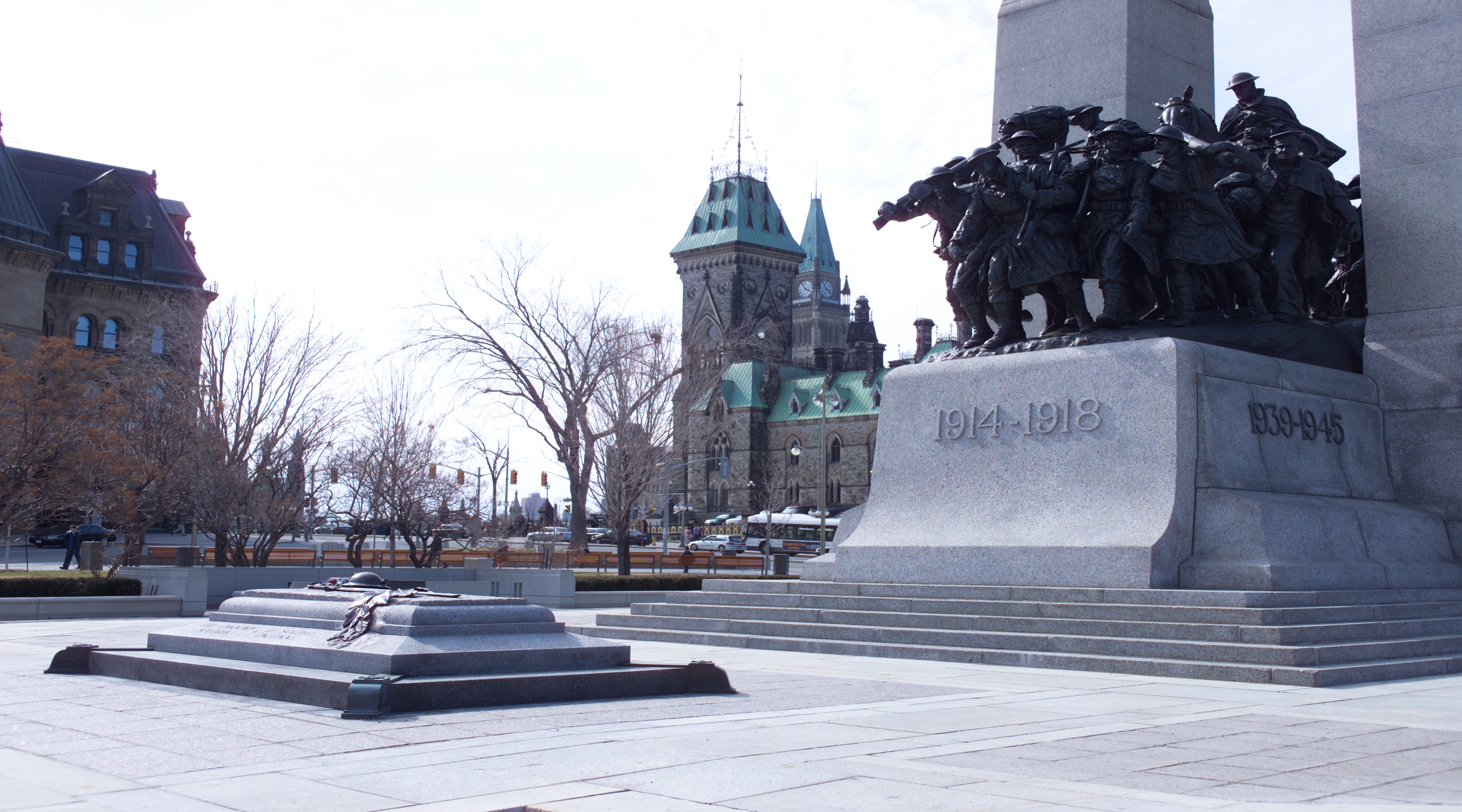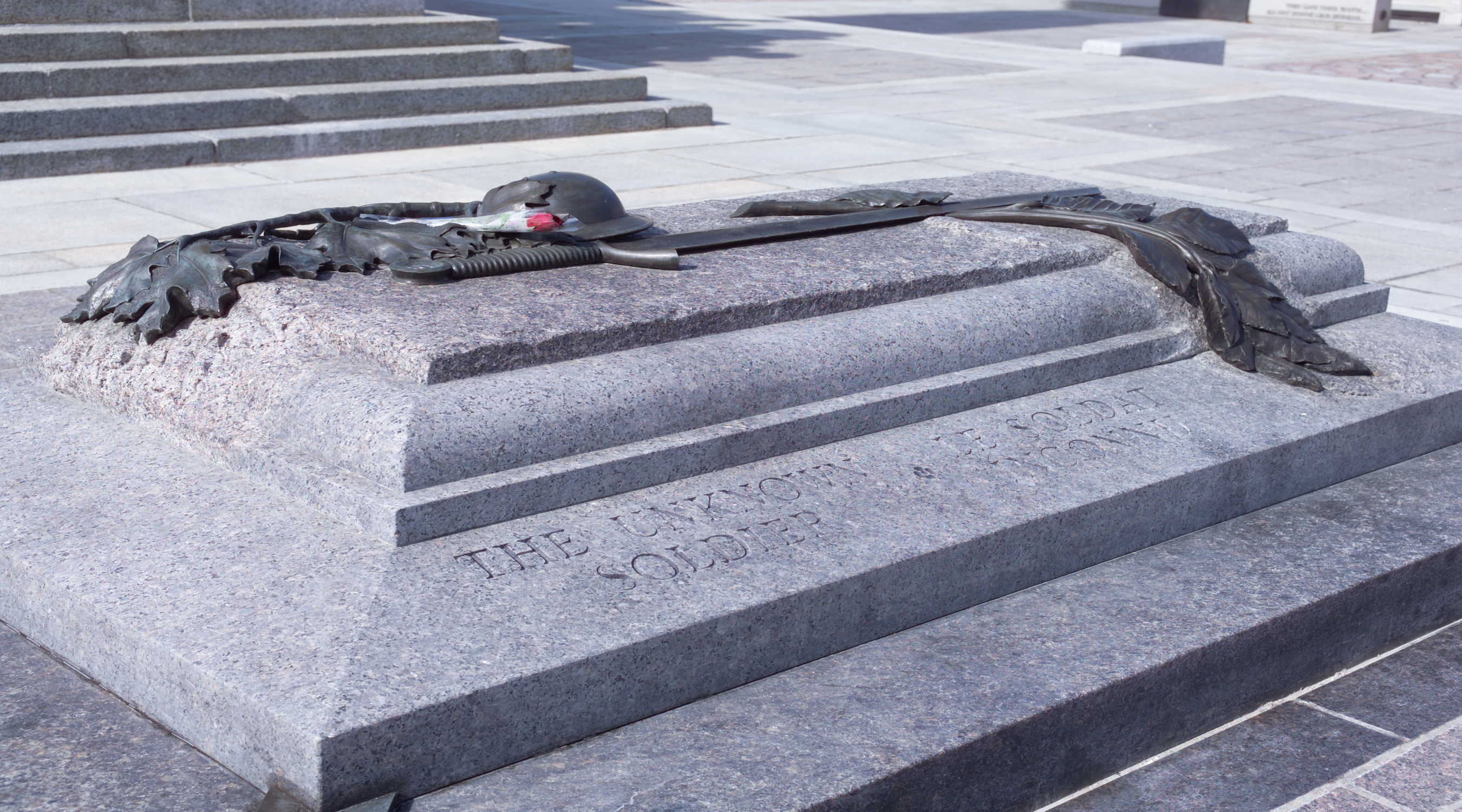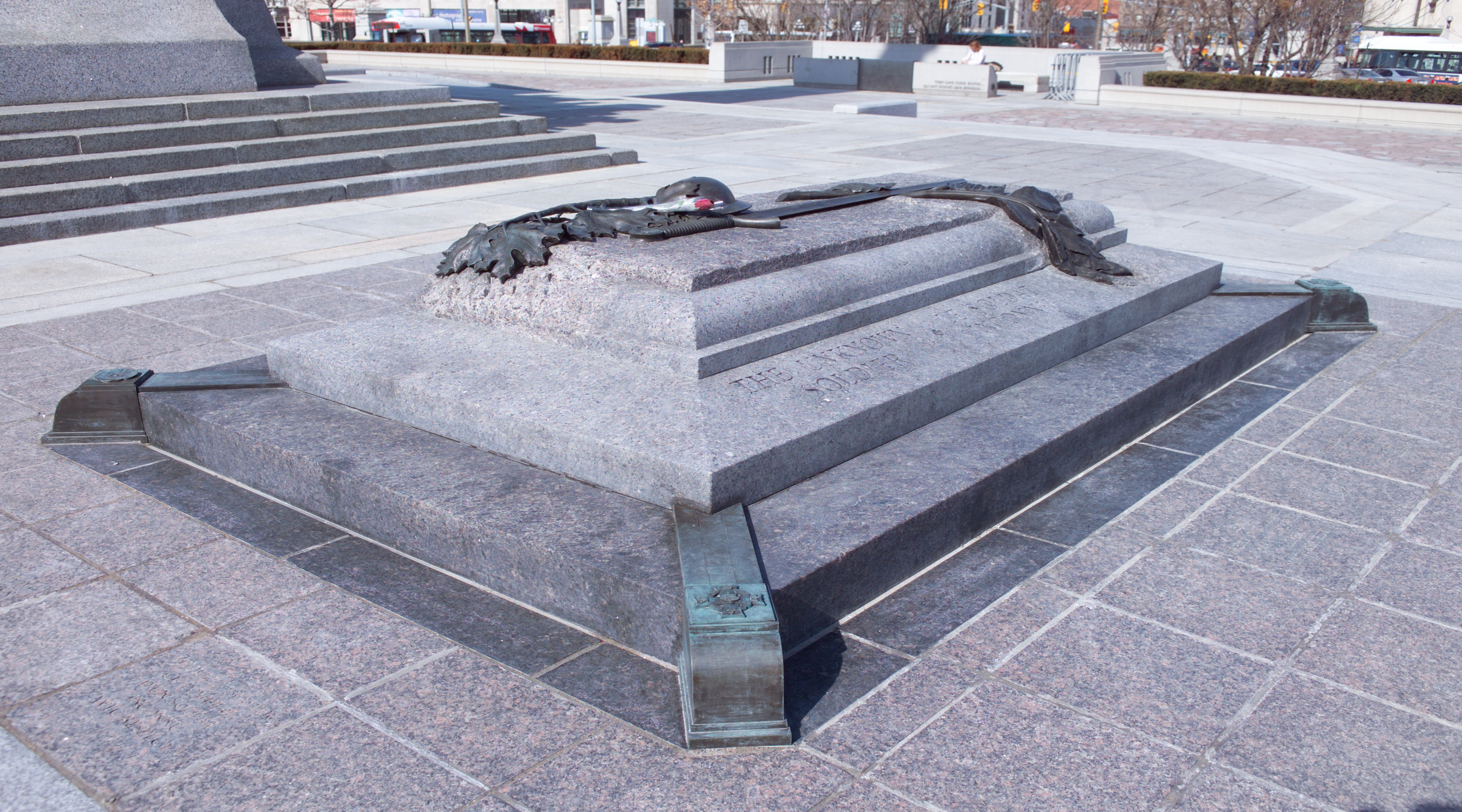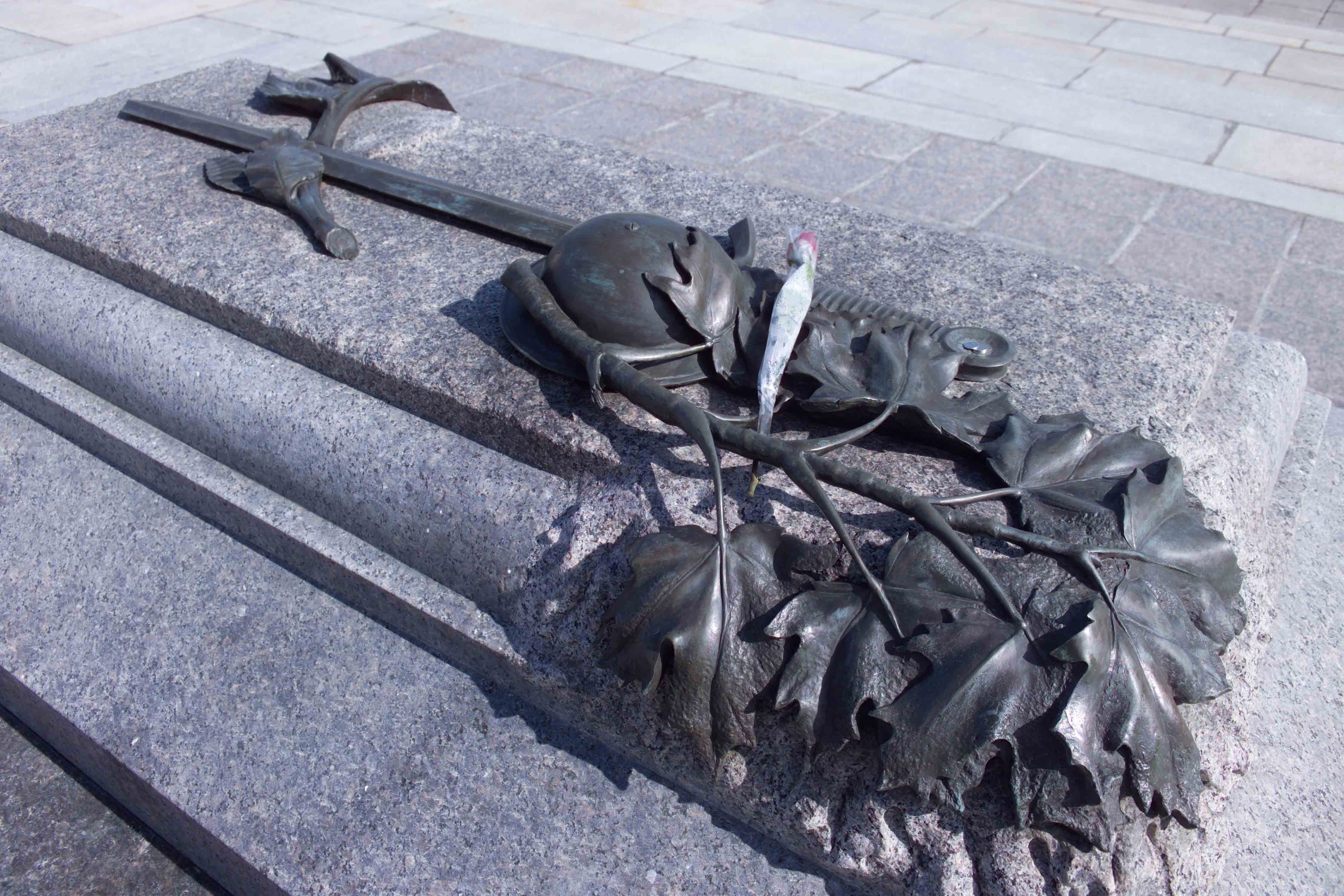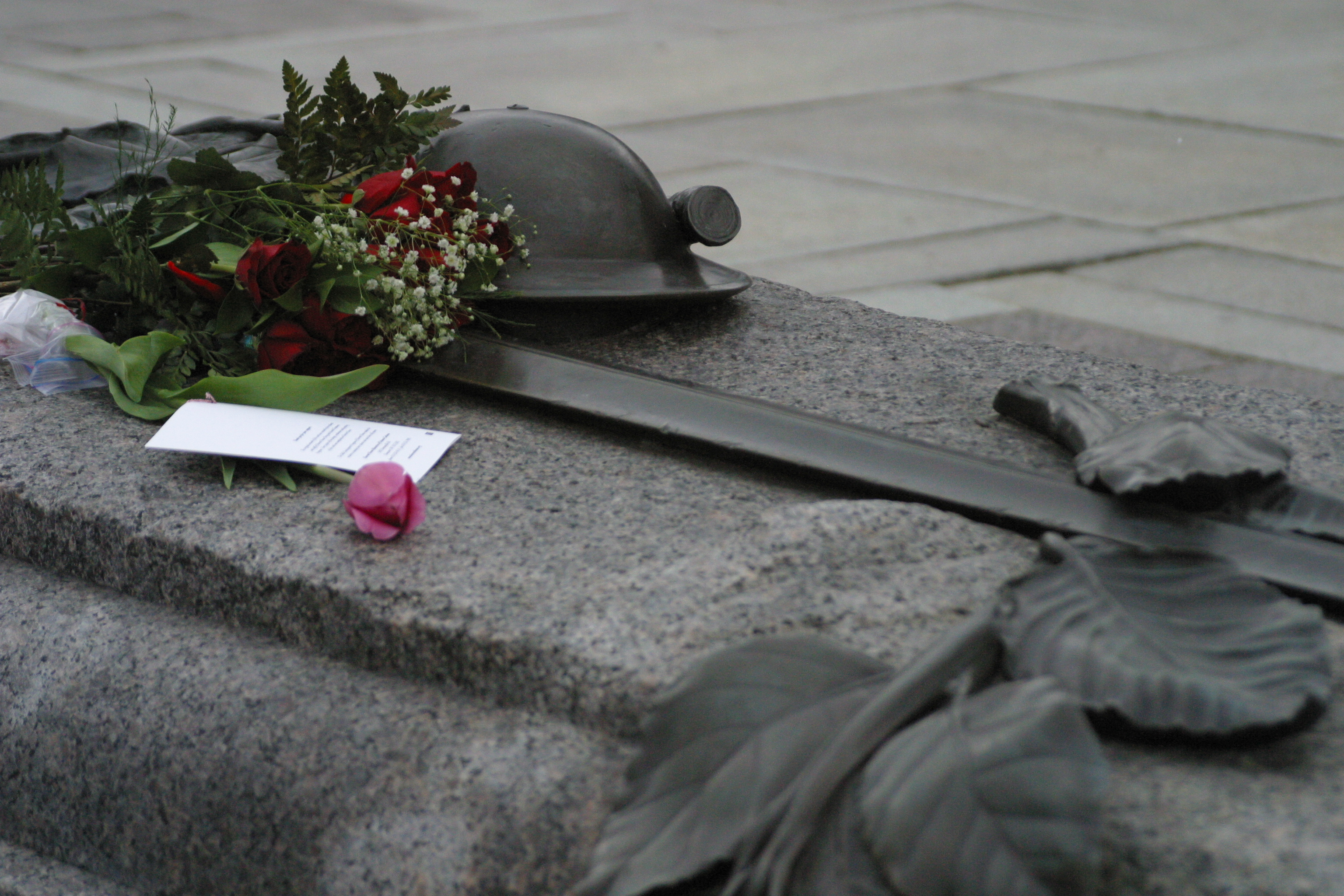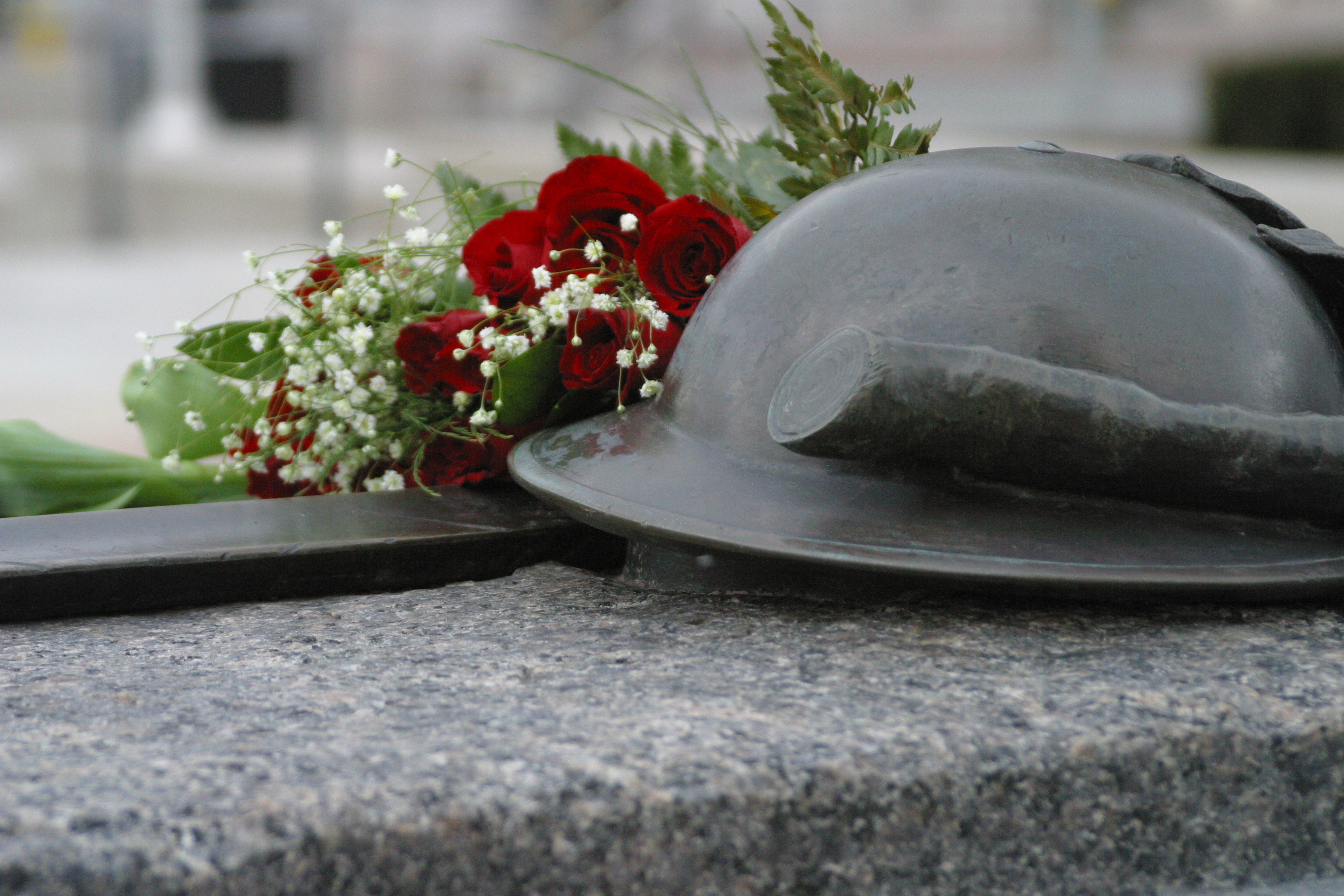On May 23, 2000, a Canadian Forces aircraft flew to France to bring the Unknown Soldier back to Canada. On board was a delegation consisting of a Canadian Forces contingent including a 45-person guard, a bearer party, and a chaplain. The Veterans Affairs contingent contained Veterans and civilians, including two representatives of Canadian youth.
The Commonwealth War Graves Commission, responsible for the care of graves and memorials of the Commonwealth forces members who died in the First and Second World Wars, selected an unidentified Canadian soldier from Cabaret Rouge British Cemetery in the vicinity of Vimy Ridge, the site of a famous Canadian battle of the First World War.
On May 25, at a ceremony at the Canadian National Vimy Memorial, the Commonwealth War Graves Commission turned over the remains to Canada. At that point the Canadian Forces took over responsibility for the safekeeping and transport of the soldier's remains. Immediately after the ceremony, the Canadian delegation returned to Ottawa with a casket containing the soldier's remains on board the aircraft.
On the evening of May 25, the casket carrying the remains of the Unknown Soldier was transported to Parliament Buildings, where it was placed in the Hall of Honour in the Centre Block. The remains lay in state there for three days, until the morning of May 28, so that Canadians could view the casket and pay their respects.
In the afternoon of May 28, the Unknown Soldier was transported from Parliament Hill to the National War Memorial on a horse-drawn gun carriage provided by the Royal Canadian Mounted Police. The funeral cortege included Their Excellencies, the Right Honourable Adrienne Clarkson, Governor General of Canada and John Ralston Saul, the Right Honourable Jean Chrétien, Prime Minister of Canada, Veterans, Canadian Forces personnel and members of the RCMP. In a ceremony which aired on national television, the Unknown Soldier was laid to rest in a specially-designed sarcophagus directly in front of the National War Memorial.
From that point on, the Tomb of the Unknown Soldier became a focal point of commemoration for all memorial events at the National War Memorial. It is a memorial in Canada for Canadians. The Tomb is a fitting way to honour the sacrifices on which our freedoms were built.
Located on the upper plaza of the National War Memorial, in front of the existing monument, the Tomb consists of a granite sarcophagus enclosing a casket containing the remains of the unknown soldier. A bronze relief sculpture is secured to the top with stainless steel pins. The four corner pieces of the sarcophagus also have bronze relief work.
The three-tiered sarcophagus is 12 feet long, 8 feet wide and 3 feet high. Dark Caledonia granite, quarried in Rivière à Pierre, Québec, was selected to complement the paler-coloured stone used in the National War Memorial. While it is patterned after the stone altar of the Canadian National Vimy Memorial, the severe Ottawa climate, as well as the bronze and stone makeup of the National War Memorial, led to the decision to produce the relief work in bronze.
The bronze relief sculpture, cast in Roberts Creek, British Columbia, includes the key elements of the stone carving on the Canadian National Vimy Memorial altar; a medieval sword, a helmet of the type worn in the First World War, with branches of maple and laurel leaves. The laurel leaves symbolize both victory and death. Four bronze corner pieces containing symbolic mementos of mourning enhance the sculpture.
Three of the corner pieces are decorated with large replicas of the Memorial Cross. First instituted in 1919, the Cross is presented to the family of those who gave their lives while serving Canada in war or on peacekeeping missions. The three Crosses are slightly different; each has the Royal Cypher of one of the successive monarchs since its inception (George V, George VI, and Elizabeth II). On the fourth corner piece there is a replica of a poppy, representing those who may fall in future conflicts. The curved shape of the corner pieces echos the curve of the top of the National War Memorial.
The sculpture was created by Mary-Ann Liu, a well-known Canadian artist from Mission, British Columbia, who works with a variety of materials. A sculptor and designer for 15 years, her work has been exhibited as far away as Japan.
The design selected for the bronze relief was the unanimous choice of the selection committee. It was one of six submissions received from internationally renowned Canadian artists from across the country who were invited to submit their designs. The selection committee was comprised of representatives from Public Works and Government Services Canada, Veterans Affairs Canada, the Department of National Defence, the National Capital Commission, the Royal Canadian Legion, a former Dominion Sculptor, a sculpture restoration specialist and a design consultant.
